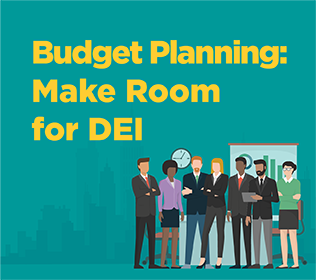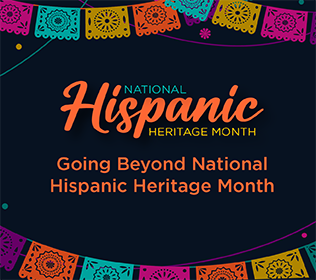Acknowledging the Issues, Addressing the Causes, and How Implementing DEI Strategies Can Help
The month of October recognizes the importance of financial planning. October is both Economic Education month and National Financial Planning month. On first consideration, it may seem that these themes do not relate to our DEI efforts. However, when we view these themes from a different perspective, we can see that focusing on diversity helps to flush this topic out and provide a complete picture.
Without access to education on financial literacy, many people grow up to have an incomplete understanding of how to plan their future. As we’ll explore in this blog post, access to this education is often dependent on upbringing and race, which leaves non-white individuals at a disadvantage. As we recognize the importance of economic education and financial planning, let’s acknowledge racial disparities and what the HR and SMB communities can do to combat them.
What is Financial Literacy?
Before we can understand the racial gap in financial literacy, we must first understand what financial literacy is. Investopedia defines “financial literacy” as a noun that describes a person’s ability to understand and utilize financial skills, which can include budgeting, investing, and managing personal finances. Financial literacy plays a large part in one’s economic well-being, which describes how financially comfortable an individual is, their ability to make ends meet, and make sound financial decisions.
The Racial Gap Within Financial Literacy: A Clearer Picture Corroborated by Data
A national survey conducted by the Financial Industry Regulatory Authority (FINRA) shows that financial literacy is the lowest among young people, women, and people with less education. These demographic features intersect heavily with race, targeting the most marginalized groups within American society. Here, Asian American and White test takers often scored higher than Hispanic, Black, and Native American test takers. It is important to note that these marginalized communities suffer from higher levels of financial difficulty and distress than the white majority.
What Are The Causes or Factors For The Racial Disparity in Financial Literacy?
Financial education comes from several sources. Families can pass down financial literacy tips, schools can teach students about financial literacy, and workplaces can financially educate employees. Marginalized communities don’t have the resources to build a strong sense of financial literacy. Thus, they cannot pass down their learnings to their youth, creating a cycle in which communities of color cannot pass down financial wisdom to the younger generations.
The Global Financial Literacy Excellence Center for Black communities found that a lack of financial literacy correlates with a lack of risk comprehension and an inability to identify information sources that can help one’s economic well-being. Thus, equal access to financial literacy education is crucial, as well as having financial education tailored to the needs of marginalized communities to help amend the racial gap.
Closing the Racial Gap in Financial Literacy and Wealth
It is important to note that closing the racial and financial literacy gap in the United States may not solve the issue overall. Furthermore, marginalized people cannot close the racial wealth gap through individual behavior alone. Personal responsibility for one’s financial literacy still leaves the structural sources of racial inequalities standing. So, while expanding financial literacy education in schools and marginalized communities is helpful, it is not a one-size-fits-all solution. Changing state and federal laws for financial education can help standardize what resources are given to all communities, thus giving every student equal access to financial literacy. On top of raising public awareness, employers and business owners have the power to help close the racial gap in wealth and financial literacy.
To view more information on the job quality issues for marginalized people and equal pay, you can view our blog posts on Job Quality Issues for the Hispanic Community and Equal Pay.
Financial Literacy Within the Workplace
Closing the racial gap in financial literacy and contributing to closing the racial wealth gap in America also relies on the choices and actions of business owners.
Having DEI initiatives at work can help eradicate discriminatory hiring practices that keep marginalized people from high-paying jobs. These initiatives can also help workplaces support their diverse employees, as many people of color and women experience pay inequity and a lack of career growth opportunities.
Here, employers can provide access to financial advice, counseling, and education with support such as planning for college costs, reducing debt, and strategizing retirement. These efforts can contribute to closing the racial and financial literacy gap and open opportunities to shrink the racial wealth gap. However, employers will also benefit from increased employee satisfaction and retention. Employers have the power to create more widespread financial literacy inside and outside of the workplace, while empowering employees to take their business to the next level.
If you’re interested in providing DEI training at your company, refreshing your hiring practices, and other important HR strategies, PrestigePEO can help. Our team of HR specialists can help you with HR management, employee benefits, retirement services, compliance, payroll, and more. Contact us today to learn more about how we can support your business as you move forward.





